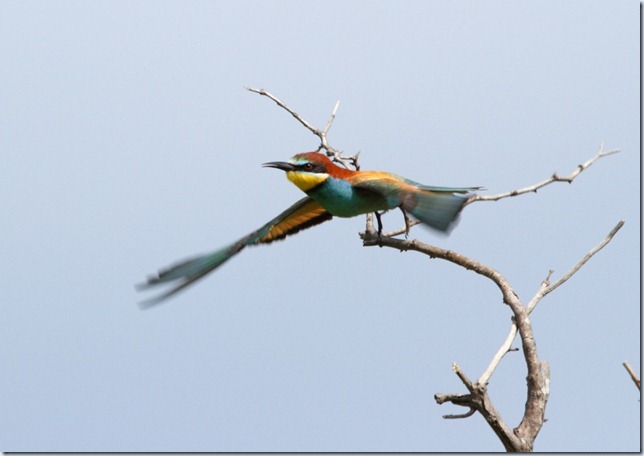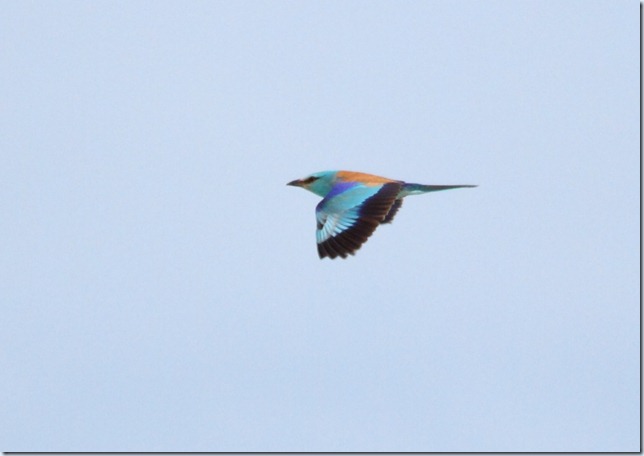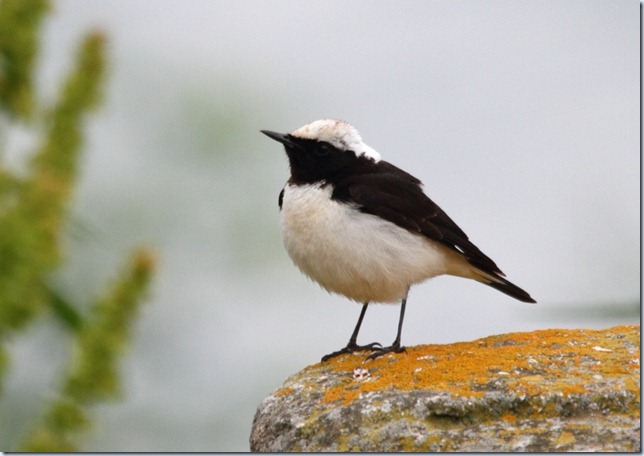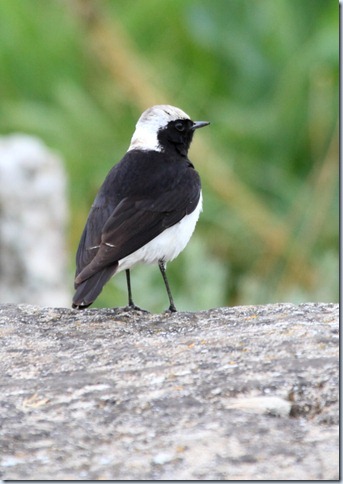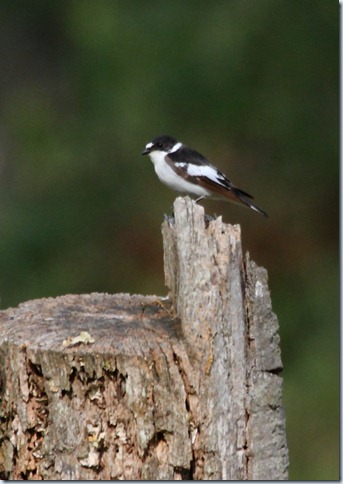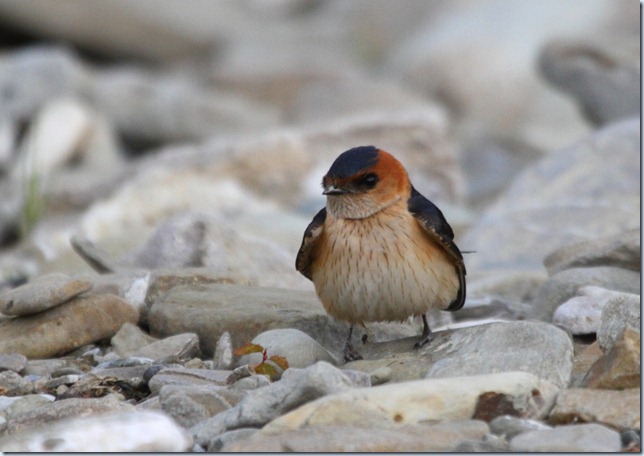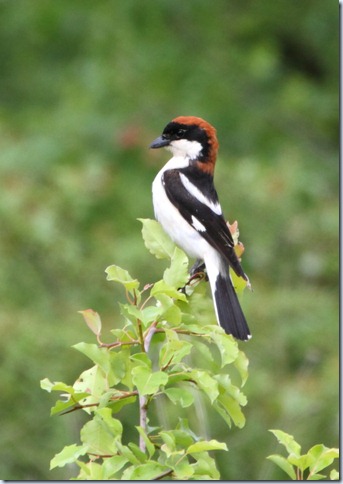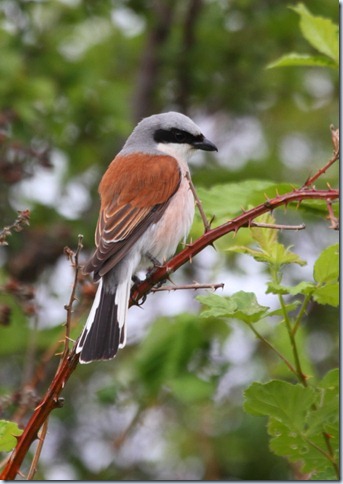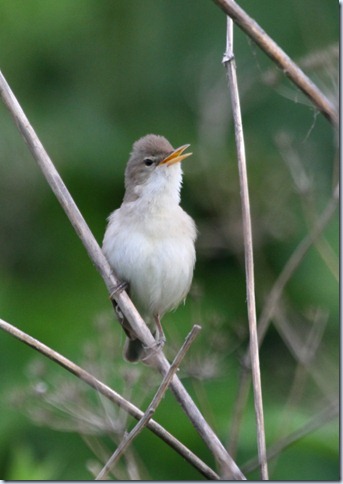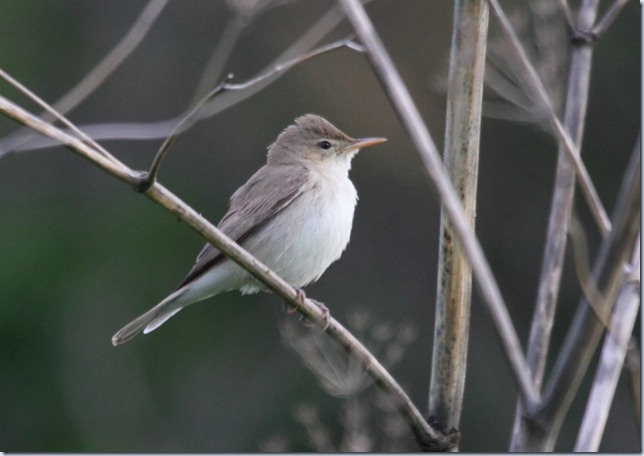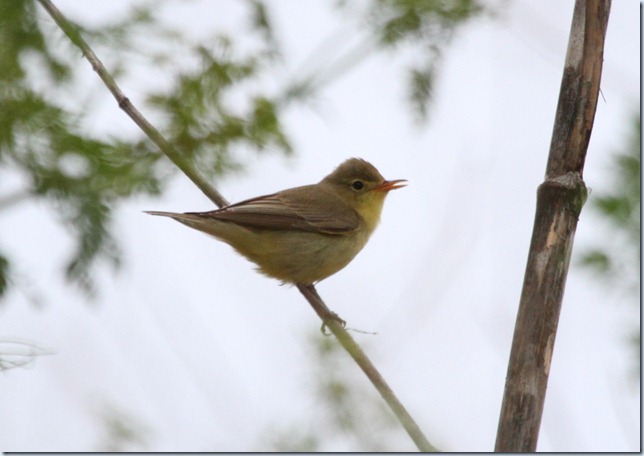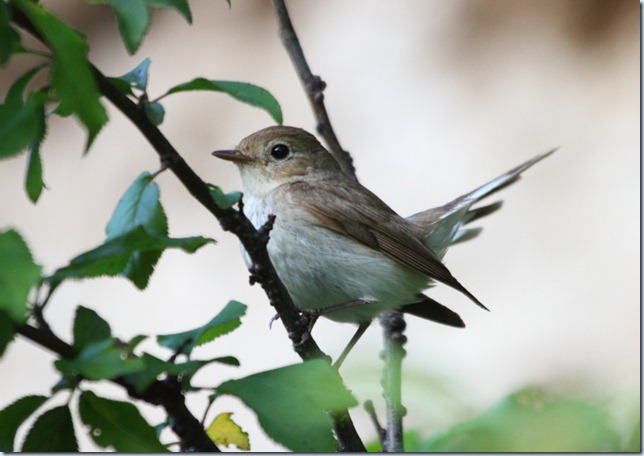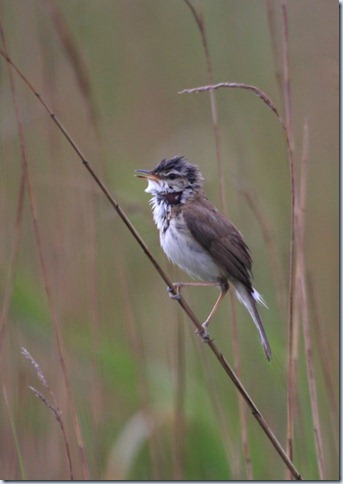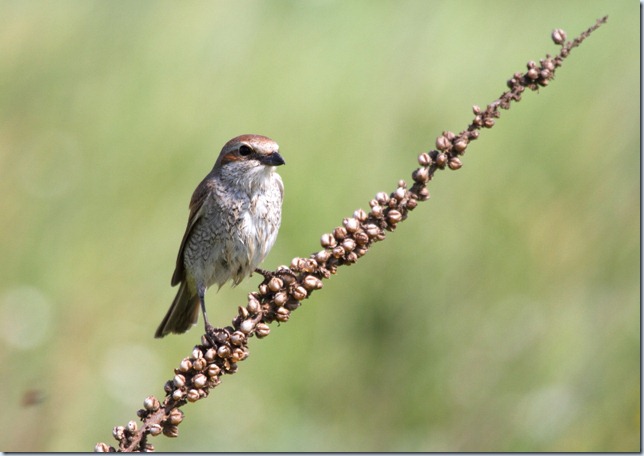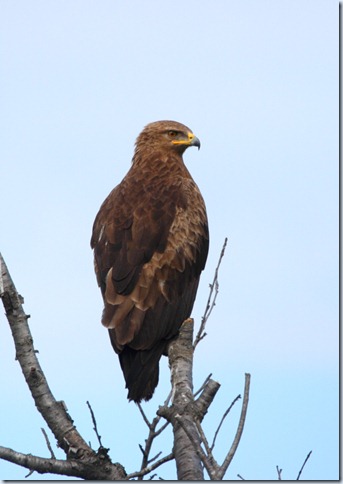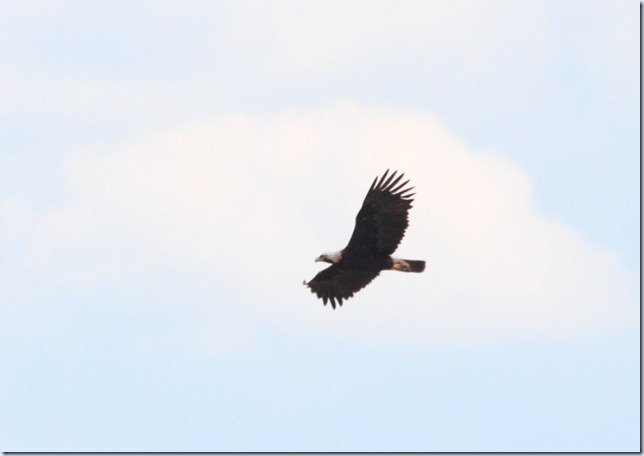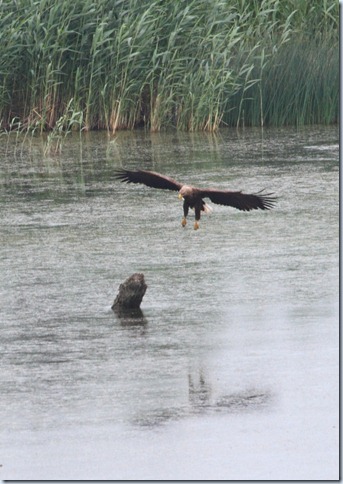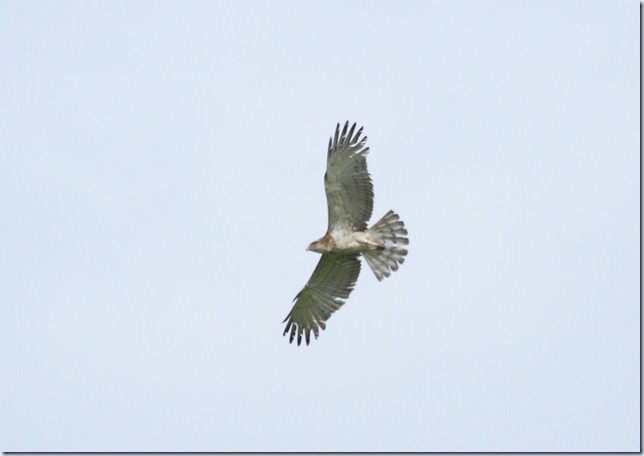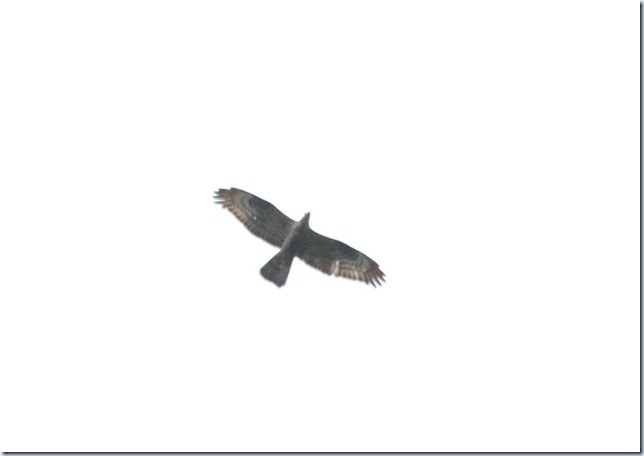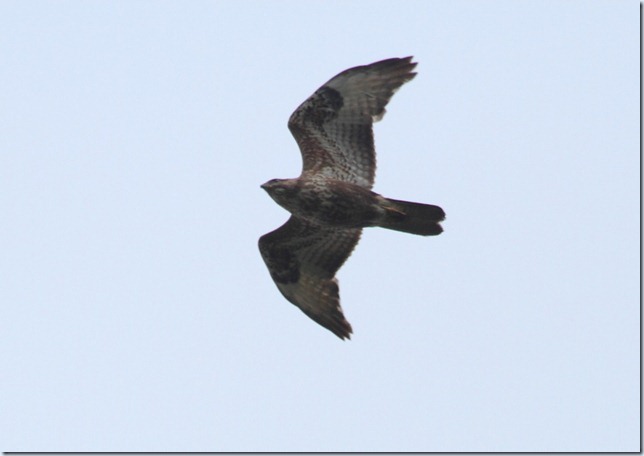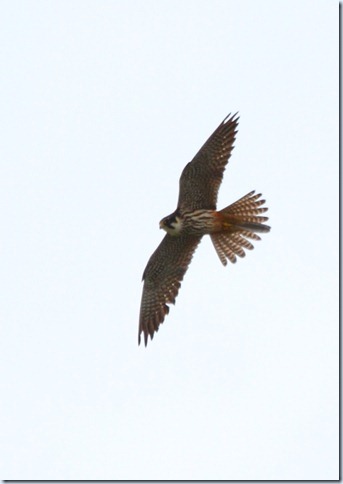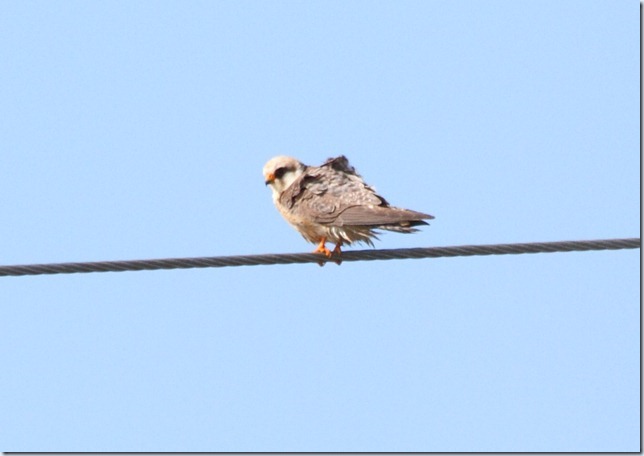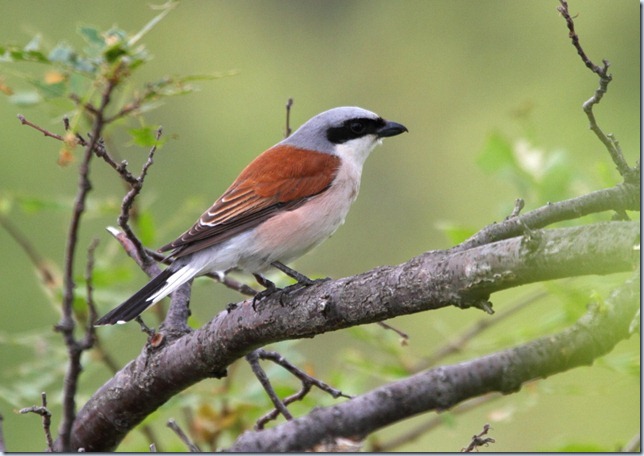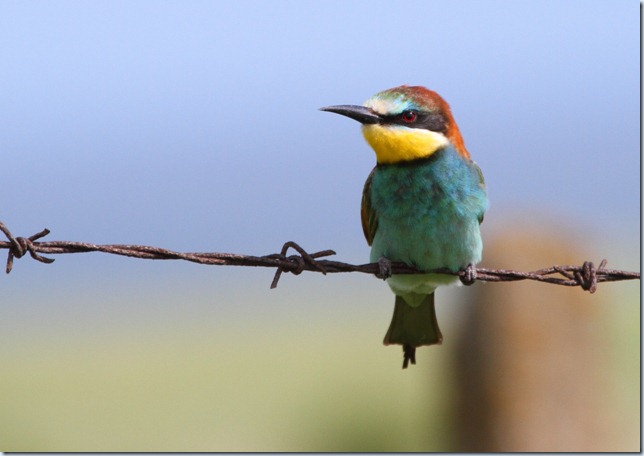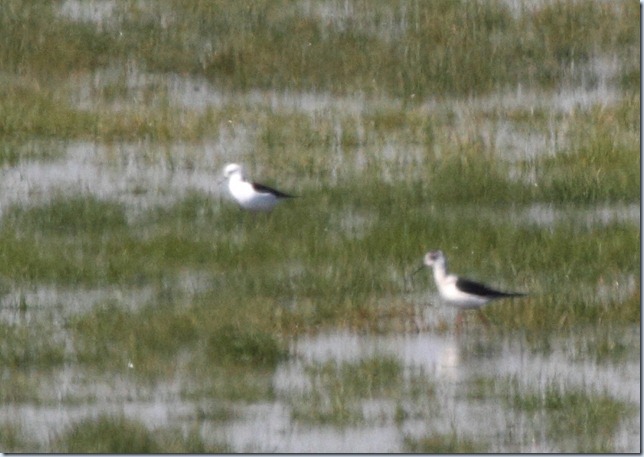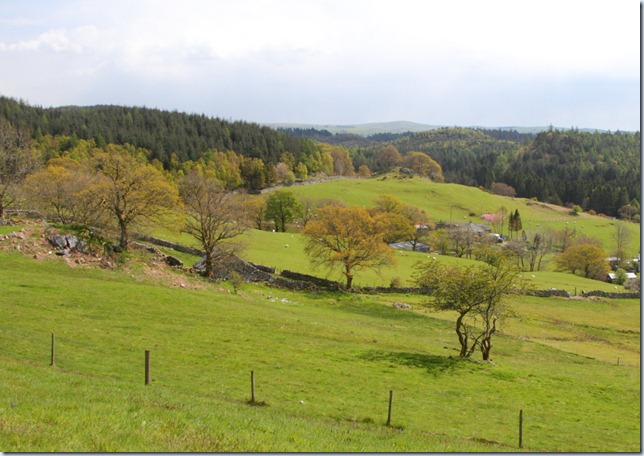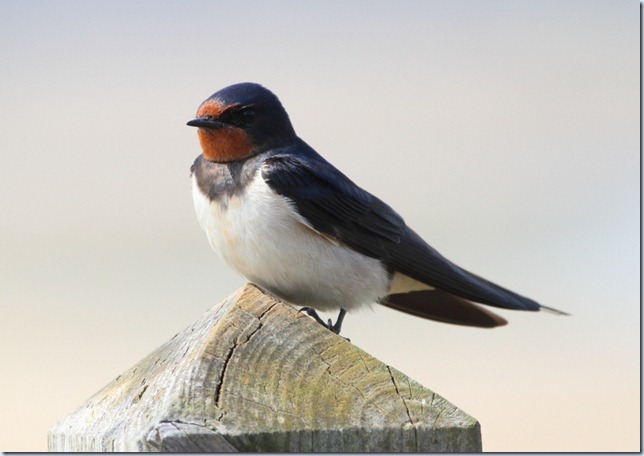The last post was a bit too beige and brown to be aesthetically pleasing… so let’s return to some more striking species to conclude the Bulgarian posts (aside from a trip report, which on current form will probably take until about Christmas!)
I think I’ve already commented on the sheer abundance of many species along the Black Sea coast, resulting in us becoming a bit blase about some truly stunning birds. We must’ve easily seen over a hundred Bee-eaters (flocks of up to around 30 strong), and probably 20+ Rollers: we had 6 going north along the coast in about half an hour at one point! Not a scenario you’re likely to encounter in the UK any time soon… aside from daydreaming in the sun!
A couple of the key species for the region were less colourful, but still attractive in a monochrome fashion. At least five pairs of Pied Wheatear showed well at Cape Kaliakra, males holding territory from the various fortifications and natural rocky perches. Although I have seen one of these in the UK, and a male at that, the breeding plumage adults really are stunning.
Featuring a similar colour scheme, Semicollared Flycatcher is another tricky bird to see in a European context – but (on our experience) very easy in Bulgaria. Two stops at Gorica (beside the E87 main road, opposite a cafe) produced birds very quickly, including a pair at a nestbox, though never quite close enough for my lens. A very smart bird… and unlike the recent Flamborough Ficedula, no problem with the ID on this guy!
Red-rumped Swallows were fairly regularly seen, albeit in small numbers – experiencing a handful of birds feeding low on insects around my head as I sat quietly in a rocky streambed was one of my highlights. Although the shot below isn’t bad, I have to credit one of Jono’s very best photos – take a look at >this<, and maximise the similar image…
And finally, we’re back to shrikes again. Sadly I never got any kind of shot of a Lesser Grey (they remained fairly scarce and elusive for us), and the one and only Masked Shrike remained high in a tree… but Woodchats were common in places, with up to four in the same spot, and Red-backed Shrikes, well, possibly bird of the trip in many ways. A conservative count would be 100!
